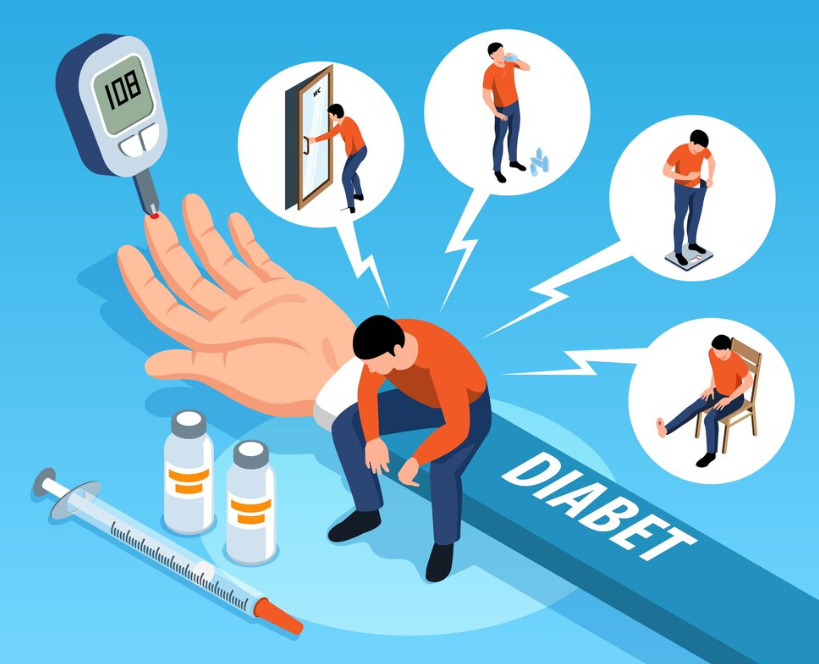
The Role of Hormones in Diabetic Gangrene Prevention Strategies: Tips for Foot Care and Blood Sugar Control
Preventing Diabetic Gangrene: Tips for Better Foot Care and Blood Sugar Control
Diabetic gangrene is a serious complication of diabetes, but proactive measures can help prevent it. Hormones significantly influence blood circulation and immune response, making proper management essential. Below are simple, practical strategies for prevention.
Foot Care Tips for Diabetes
- Inspect Your Feet Daily
Regularly check for cuts, blisters, or sores. In addition, use a mirror to view the bottoms of your feet if needed.
Why it helps: Early detection of issues prevents complications. - Keep Your Feet Clean and Dry
Wash with warm water and mild soap, and dry thoroughly, especially between the toes. Moreover, avoid soaking your feet for long periods to prevent dryness.
Why it helps: Prevents infections caused by excess moisture. - Moisturize Regularly
Apply lotion to prevent cracks, but avoid the spaces between your toes. Therefore, you’ll reduce the chance of infections in these areas.
Why it helps: Maintains skin integrity and lowers the risk of infections. - Trim Nails Carefully
Cut toenails straight across and file sharp edges. However, avoid cutting too short to prevent ingrown nails.
Why it helps: Reduces injury and infection risk. - Wear Proper Footwear
Choose well-fitting shoes that provide support and avoid pointy or tight styles. Furthermore, opt for shoes with a cushioned sole for better comfort.
Why it helps: Minimizes pressure points and injury risks. - Protect Your Feet
Always wear socks and shoes, even indoors, to avoid injuries. As a result, you’ll prevent accidental cuts or trauma that can go unnoticed.
Why it helps: Shields feet from everyday hazards.
Blood Sugar Control for Gangrene Prevention
- Monitor Blood Sugar Regularly
Track your blood sugar levels daily using a monitor or app. Additionally, review your readings with your healthcare provider to adjust your management plan.
Why it helps: Keeps levels stable, reducing the risk of circulation issues. - Follow a Healthy Diet
Focus on fruits, vegetables, lean proteins, and whole grains. Meanwhile, limit sugary and processed foods that can spike blood sugar.
Why it helps: Promotes better blood sugar control and overall health. - Stay Physically Active
Engage in moderate exercise like walking, swimming, or yoga for at least 30 minutes most days. For example, even light activities like stretching can boost circulation.
Why it helps: Enhances circulation and improves glucose utilization. - Take Medications as Prescribed
Use insulin or other diabetes medications as directed by your doctor. Consequently, this ensures your blood sugar stays within the target range.
Why it helps: Prevents complications and stabilizes glucose levels.
Conclusion: A Focus on Prevention
By prioritizing foot care and maintaining good blood sugar control, you can significantly lower your risk of diabetic gangrene. In addition, regular monitoring, healthy habits, and consistent self-care are the keys to managing diabetes and preventing severe complications. Always consult your healthcare provider for tailored advice and support.
To seek medical advice, always consult a Doctor. Here are our recommended experts. Click Here
To read more on Diabetic gangrene. Click Here
Recent Posts
Dr. Karan0 Comments
Preventing Gum Disease: Key Habits and Dental Check-ups
Dr. Karan0 Comments
Recognizing the Signs and Symptoms of Gum Disease:
Tags
arthritis
Blood tests
causes
Children
complications
coping strategies
diabetes
diagnosis
diet
eczema
exercise
Healthy Lifestyle
Heart Disease
heart health
High blood pressure
hormonal imbalances
Hormones
hydration
india
Indian patients
inflammation
lifestyle changes
management
medication
Medications
mental health
Nutrition
pain management
Peripheral Vascular Disease
physical therapy
pregnancy
prevention
risk factors
signs
skincare
skin condition
stress management
stroke
support
surgery
symptoms
transmission
treatment
treatment options
Women's Health


